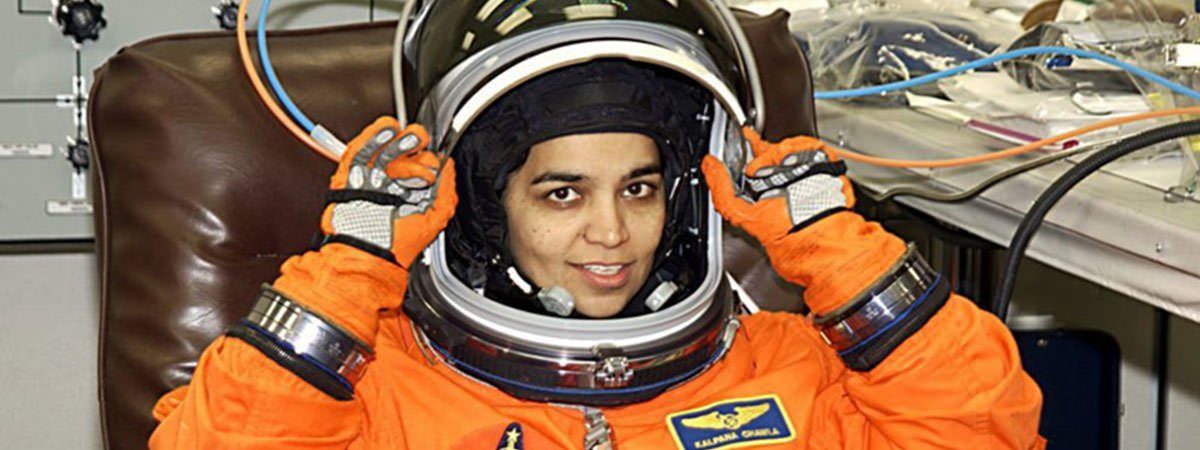Born in the small town of Karnal in the Indian state of Haryana on July 1, 1961, Kalpana (‘imagination’ in Hindi) Chawla was an Indian-American astronaut and aeronautical engineer. She is most famous for being the first woman of Indian origin to fly in space and for her achievements as part of space flights STS-87 and STS-107. In 1982, Chawla completed her Aeronautical Engineering Degree from Punjab Engineering College in India, and moved to the United States for further studies. Over the next six years she completed her Masters and Ph.D. in Aerospace Engineering. In 1988, Kalpana began her research at the Ames Research Center of NASA (National Aeronautics and Space Administration). In 1991, after becoming a naturalized US citizen, Kalpana Chawla applied for the NASA Astronaut Corps, finally joining the group in 1995. On her first space flight (STS-87) aboard the Columbia Space Shuttle in 1997, she became the first Indian-born woman to fly in space, inspiring millions with her remarkable journey. Her second space flight (STS-107) in 2003 however proved to be fatal as the Columbia Space Shuttle disintegrated upon re-entering the atmosphere of the earth. The unfortunate incident claimed her life along with six of her crew members. Kalpana Chawla was posthumously awarded the Congressional Space Medal of Honor and the NASA Distinguished Service Medal. With her grit and determination, she managed to accomplish a lot in her life and contributed towards the development of space research in significant ways. Know more about the journey of Kalpana Chawla through her 10 major achievements.
#1 SHE DID TWO MASTER’S DEGREES AND A PH.D. IN AEROSPACE ENGINEERING
Fascinated by the stars and outer space from a young age, Kalpana Chawla took a keen interest in flying and the science behind it, as she grew up. A high performing student in school, she took up Aeronautical Engineering at Punjab Engineering College in India, being the only girl to opt for the course in her batch. Completing her Bachelor’s degree in 1982, Kalpana Chawla moved to the United States for further studies. In the US, she obtained a Master of Science (MS) degree in Aeronautical Engineering in 1984, from the University of Texas in Arlington. Her MS thesis was titled “Optimization of cross-flow fan housing for airplane wing installation”. After completing her first MS degree, she went on to obtain another Master’s degree and a Doctorate (Ph.D.) in Aerospace Engineering from the University of Colorado Boulder in 1988. Her Ph.D. thesis was based on “Computation of dynamics and control of unsteady vertical flows.”
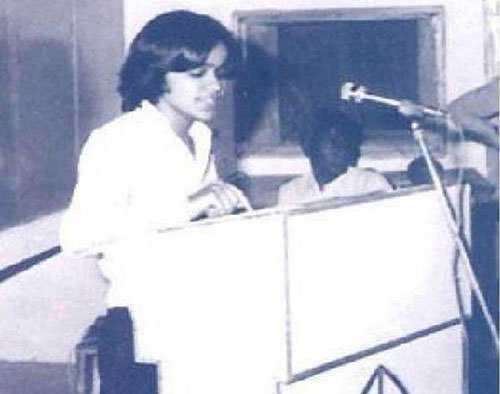
#2 SHE WORKED AT THE NASA AMES RESEARCH CENTER FOR 5 YEARS
Kalpana Chawla began working at the NASA Ames Research Center in 1988. Her research focused on the concepts of vertical and/or short take-off and landing through computational fluid dynamics, wherein numerical analysis and data structures are used to analyze and solve problems related to fluid mechanics and fluid flows. The concepts that could make an airplane take-off or land on vertical as well as short runways. Chawla worked at the NASA Ames Research Center for about five years, until she joined Overset Methods Inc. as Vice President and Research Scientist in the year 1993. In her new role she specialized in the simulation of moving multiple body problems. Most of her research on Computational Fluid Dynamics and Vertical and/or short take-off and landing (V/STOL), has been published and is available in technical journals and various conference papers.
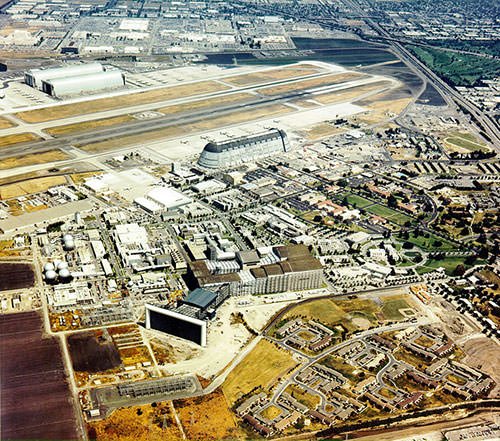
#3 SHE HELD A CERTIFIED FLIGHT INSTRUCTOR RATING AND A COMMERCIAL PILOT LICENSE
Kalpana had always been interested by airplanes and flying. She married her flying instructor and an aviation author Jean-Pierre Harrison in 1983. She was a certified flight instructor herself, rating aircraft and gilders. She also held a commercial pilot license for single and multi-engine airplanes, seaplanes and gliders. Her interest in flying and space propelled her to apply for NASA Astronauts Corps once she became a naturalized United States citizen in April 1991. She kick-started her space career as an Astronaut joining the team in March 1995, and was selected for her first space flight mission STS-87 in 1996.

#4 SHE BECAME THE FIRST INDIAN BORN WOMAN TO FLY IN SPACE
Kalpana Chawla’s first space mission began on November 19, 1997, wherein she was a part of a crew of six astronauts who flew the flight STS-87 aboard the Space Shuttle Columbia. Taking the flight she became the 33rd woman astronaut to fly in space, and created history by being the first Indian born woman to do so. The event served as a tremendous inspiration for a developing country where several scientific institutions were named after her. India would itself go on to have a successful space program in the coming decades. On the mission Kalpana Chawla logged more than 372 hours in space and traveled over 10.4 million miles, with the shuttle making 252 orbits of the Earth in just over a fortnight. The goal of the mission included conducting experiments using the USMP-4 (the United States Microgravity Payload), conducting two Extravehicular Activity (EVAs), and deploying the SPARTAN-201 experiment. This was the first mission wherein the EVA, an activity that is done by an astronaut outside the spacecraft in space, was successfully done from Columbia. Chawla was appointed as Mission Specialist 1, and was responsible for deploying the SPARTAN satellite, which unfortunately malfunctioned. The malfunction was however found to be caused by errors in software interfaces. Chawla was fully exonerated after a NASA investigation.
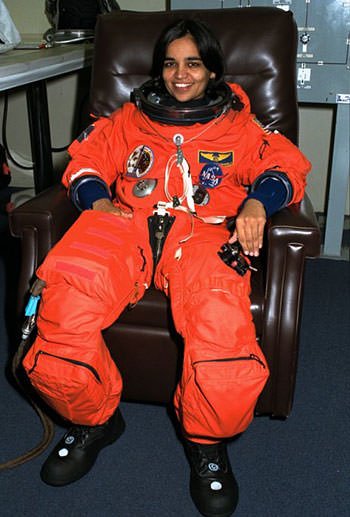
#5 HER SECOND SPACE MISSION PROVIDED IMPORTANT INSIGHTS ABOUT THE EARTH AND SPACE SCIENCE
In 2001, Kalpana Chawla was selected for her second flight as part of the crew of STS-107. The STS-107 was delayed 18 times due to issues of scheduling and various technical problems. The mission was finally launched on January 16, 2003, and Chawla began her second space mission on the Space Shuttle Columbia. This mission was the 28th and the final flight of Space Shuttle Columbia. Kalpana Chawla was appointed as Mission Specialist 2 in what would be her second and last spaceflight. She, along with the other six crew members, Commander Rick D. Husband, Pilot William C. McCool, Mission Specialist 1 David M. Brown, Mission Specialist 3 Michael P. Anderson, Mission Specialist 4 Laurel B. Clark and Payload Specialist Ilan Ramon, died on February 1, 2003, when Space Shuttle Columbia disintegrated over Texas upon re-entering the Earth’s atmosphere. The mission, which began on January 16, 2003, was in the outer space for 15 days, 22 hours and 20 minutes and during this time, more than 80 scientific experiments were conducted. These experiments gave an insight into the advanced technological developments concerning the earth and space.
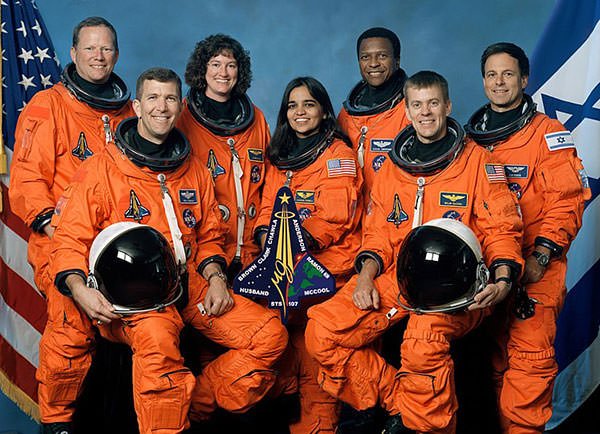
#6 SEVERAL IMPORTANT EXPERIMENTS WERE CONDUCTED DURING STS-107
Some of the major mission highlights for the crew of Space Shuttle Columbia flight STS-107 included the SPACEHAB Double Research Module, the Freestar (Fast Reaction Experiments Enabling Science Technology Applications and Research) Experiment, and the Extended Duration Orbiter pallet. Another very important experiment included a video that was taken to study the properties of atmospheric dust. Through this video, a new type of atmospheric phenomenon may have been detected which was called Transient Ionospheric Glow Emission in Red (TIGER). Some of the major experiments that were conducted during the STS-107 included 9 commercial payloads with 21 investigations; 1 payload for ISS Risk Mitigation; 4 payloads for European Space Agency; 14 investigations and 18 payloads for NASA’s Office of Biological and Physical Research; and 23 investigations in the SPACEHAB RDM. Among the FREESTAR experiments, the major ones included Mediterranean Israeli Dust Experiment (MEIDEX), Shuttle Ozone Lim Sounding Experiment (SOLSE-2), Critical Viscosity of Xenon-2 (CVX-2), Solar Constant Experiment-3 (SOLCON-3), Space Experiment Module (SEM-14) and Low Power Transceiver (LPT). Ram Burn Observation (RAMBO) and Shuttle Ionospheric Modification with Pulsed Local Exhaust Experiment (SIMPLEX) were some of the additional payload experiments that were conducted.
#7 SHE WAS AWARDED THE CONGRESSIONAL SPACE MEDAL OF HONOR
Authorized in 1969 and presented by the President of the United States, the Congressional Space Medal of Honor recognizes “any astronaut who in the performance of his or her duties has distinguished himself or herself by exceptionally meritorious efforts and contributions to the welfare of the Nation and mankind”. Kalpana Chawla posthumously received the Congressional Space Medal of Honor in 2004 by US President George W. Bush, for her contribution to the STS-107, which was the 28th and the final flight of Space Shuttle Columbia. This Congressional Space Medal of Honor is awarded to an astronaut who has performed feats of extraordinary accomplishment while contributing towards the space missions. She was the 17th recipient of the award, which was firstly bestowed upon Neil Armstrong in 1978 for commanding the first lunar landing in Apollo 11.
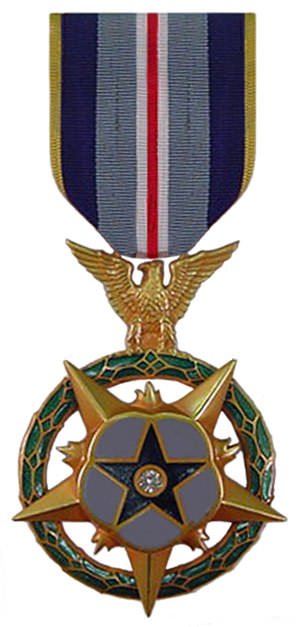
#8 SHE WAS ALSO AWARDED THE NASA DISTINGUISHED SERVICE MEDAL
Kalpana Chawla was posthumously awarded the NASA Distinguished Service Medal in 2004. The award is bestowed upon those who have displayed “distinguished service, ability, or courage that has made a contribution representing substantial progress to aeronautical or space exploration in the interests of the United States.” The NASA Distinguished Service Medal is the highest award that is bestowed by the agency. Kalpana Chawla received the medal along with fellow crew member William McCool almost a year after their death. Chawla was also posthumously awarded the NASA Space Flight Medal. This award is given to astronauts who have “displayed significant achievement or service during individual participation as a civilian or military astronaut, pilot, mission specialist, payload specialist, or other space flight participant in a space flight mission”. NASA has also named a supercomputer after her.
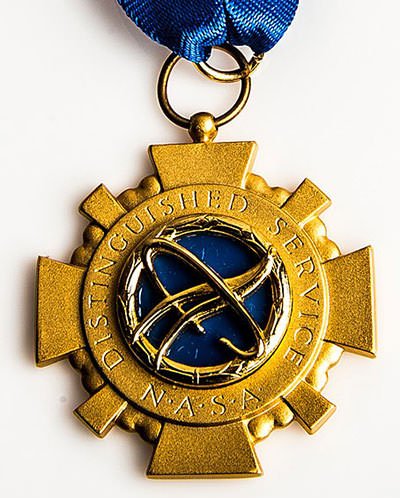
#9 A SERIES OF INDIAN METEOROLOGICAL SATELLITES WERE NAMED AFTER HER
On February 5, 2003, the then Prime Minister of India, Mr. Atal Bihari Vajpayee, held a condolence meeting for Kalpana Chawla in Delhi and announced that India’s meteorological series of satellites, which were called METSAT would be renamed and now be called as KALPANA to honor her memory. The first satellite of this series was launched by India on September 12, 2002, with the name METSAT-1, which was hereafter known as KALPANA-1. KALPANA-1 was the first exclusive meteorological satellite that was built by India’s space research agency ISRO.
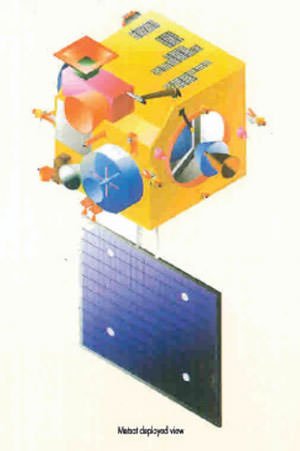
#10 NUMEROUS THINGS HAVE BEEN NAMED AFTER HER INCLUDING AN ASTEROID
In 2001, astronomers of the Near-Earth Asteroid Tracking program at Palomar Observatory in California, United States discovered an asteroid in the outer region of the asteroid belt. The asteroid was named after Kalpana Chawla. 51826 Kalpanachawla is a member of the largest family (Eos) in the outer asteroid belt with close to 10,000 asteroids. The asteroid is about 7 km in diameter. Apart from that, there are many streets, universities, awards and institutions that have been named to commemorate Kalpana Chawla in both in the United States and India. Here are a notable few:-
- The 74th Street in Jackson Heights, Queens, New York City has been renamed to Kalpana Chawla Way.
- The Kalpana Chawla ISU Scholarship fund at the International Space University and the Kalpana Chawla Memorial Scholarship program at the University of Texas at El Paso (UTEP), which have been created to support women in international space education and provide financial help to meritorious graduate students.
- The Kalpana Chawla Award was instituted by theGovernment of Karnataka, India, in 2004 to recognize young women scientists.
- The Government of Haryana, India established the Kalpana Chawla Planetarium in Jyotisar, Kurukshetra.
- The Kalpana Chawla Outstanding Recent Alumni Award at the University of Colorado, given since 1983, was renamed after Chawla.

